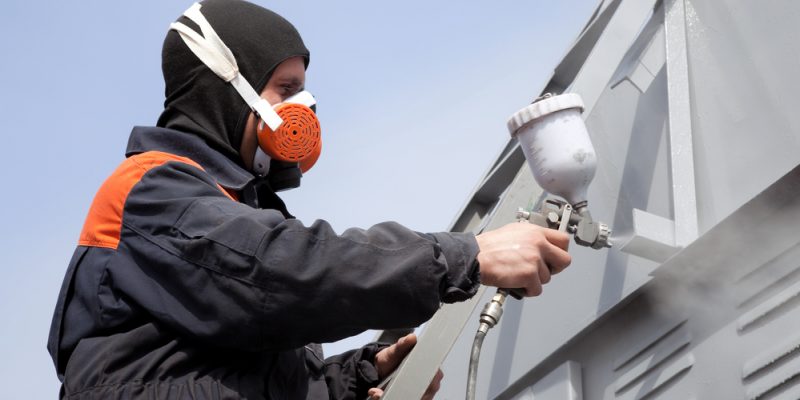Home is where we seek comfort and security, but beneath its cosy exterior lies a range of potential hazards that we might not even be aware of. Ensuring the safety of our loved ones requires a keen understanding of these lurking dangers.
Below, we’ll explore the various hiding hazards within your home and provide practical solutions to mitigate risks. So let’s embark on a journey to uncover the secrets of a safer home!
Common Hiding Hazards
1. Cords and Cables: Tripping and Entanglement Risks
In today’s technology-driven world, cords and cables are ubiquitous. However, they can pose serious risks, particularly in high-traffic areas. Tripping over a cord or getting entangled can lead to falls and injuries. To avoid these accidents, consider implementing cord management strategies such as tucking cords away or using cable covers to keep them out of harm’s way.
2. Small Objects and Choking Hazards: Protecting Young Children and Pets
Small objects can be fascinating to young children and pets, but they can also become choking hazards. Their curious nature often leads them to put small items in their mouths, posing a serious threat to their health and safety. It’s crucial to keep small objects out of their reach by storing them in containers with secure lids or higher places.
3. Cleaning Supplies and Chemicals: Preventing Poisoning and Accidental Ingestion
While cleaning supplies and chemicals help us maintain a clean home, they can also be hazardous if mishandled or ingested. Poisoning risks are particularly high when these substances are within the reach of children or pets. Ensure their safety by storing cleaning supplies in locked cabinets or high shelves, out of their curious hands. Also, childproofing measures like safety latches can provide an extra layer of protection.
4. Sharp Objects and Tools: Avoiding Cuts and Puncture Wounds
Sharp objects and tools are found in most households, ranging from kitchen knives to gardening tools. These items, if left unsecured or within easy reach, can lead to cuts and puncture wounds. To prevent accidents, store sharp objects in designated toolboxes or locked cabinets. Keep them out of sight and reach and you minimize the risk of injuries.
5. Medications: Safely Storing and Preventing Accidental Ingestion
Medications are essential for our well-being, but they can pose a significant danger if not stored properly or accidentally ingested. Accidental ingestion or overdose of medications can have serious consequences. To ensure the safety of your household, invest in lockboxes or medicine safes and follow secure storage guidelines. Placing medications out of sight and the reach of children and pets is equally crucial.
Hidden Electrical Dangers
6. Outlets and Power Strips: Shielding against Electrical Shocks and Burns
Electrical outlets and power strips are common fixtures in our homes, but they can be potential sources of electrical shocks and burns. Protect your family by installing childproof outlet covers, which prevent young children from inserting objects into sockets. Also, consider using surge protectors to safeguard against potential electrical hazards.
7. Faulty Wiring and Appliances: Preventing Fires and Electrical Accidents
Faulty wiring and malfunctioning appliances are among the leading causes of fires and electrical accidents in homes. Regularly inspect your home’s wiring for any signs of damage or wear. If you notice any issues, it’s important to hire professionals to conduct repairs or replacements promptly. Address these potential hazards and you’re well on your way to a safer living environment.
8. Overloaded Circuits: Reducing the Risk of Electrical Fires and Damage
Overloading circuits by plugging too many devices into a single outlet can lead to electrical fires and damage to your electrical system. To minimize these risks, practice proper load balancing by distributing electrical loads across multiple circuits. Additionally, familiarize yourself with circuit breaker usage to prevent overloads and ensure the safe functioning of your electrical system.
Renovation-related Dangers
9. General Home Renovations: Identifying and Minimizing Hazards
Home renovation projects, while exciting, can introduce new hazards both inside and outside your home. When planning renovations, conduct thorough research to identify potential dangers and take necessary precautions. Simple measures like ensuring proper ventilation, using safety equipment, and following simple DIY guidelines can help minimize risks. However, for complex or high-risk projects, it’s always advisable to hire professional renovators who have the expertise to handle hazards effectively.
10. House Painting: Mitigating Hazards and Ensuring High-Quality Results
House painting projects may seem relatively harmless, but they come with their own set of hazards. From working with ladders and scaffolding to handling paint chemicals, some risks can jeopardize safety. It’s important to hire experienced and licensed commercial painters who are experienced in addressing common problems and ensuring safety throughout the painting process. Their expertise not only minimizes risks but also guarantees high-quality results.
11. Home Demolition: Safety Precautions for a Smooth Execution
Home demolition projects require careful planning and execution to ensure the safety of everyone involved. Hazards such as structural collapses, flying debris, and hazardous materials must be addressed. It’s always highly recommended to hire professional demolition services that possess the necessary expertise and equipment to carry out the project safely and efficiently. Their knowledge of proper safety protocols minimizes the risks associated with demolition, protecting both the workers and the surrounding environment.
Indoor Air Quality Hazards
12. Mold and Mildew: Promoting Healthier Air Quality
Mould and mildew not only damage property but also pose health risks, particularly respiratory problems. Preventing their growth is essential for maintaining a healthy living environment. Ensure proper ventilation by using exhaust fans in areas prone to moisture, such as bathrooms and kitchens. Regularly inspect your home for signs of water leaks and promptly address them. Additionally, investing in dehumidifiers can help control moisture levels, inhibiting mould and mildew growth.
Conclusion
Safety should be a top priority when it comes to our homes. By familiarizing ourselves with the hiding hazards within our living spaces and implementing practical solutions, we can create a secure environment for our loved ones. Remember, taking immediate action to address potential risks is vital. Additionally, when undertaking projects like home demolition or commercial-level painting, it’s vital to prioritize safety by hiring professionals who possess the necessary expertise and experience. Together, let’s create homes that provide comfort, peace of mind, and a haven for all.




















